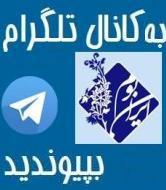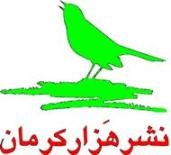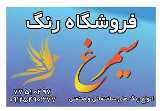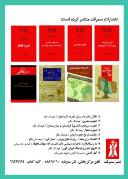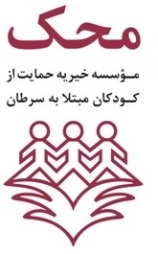Horses & Courses
- Щ…ЩҠШұШ§Ш« Щ…Ш№ЩҶЩҲЩҠ
- ЩҶЩ…Ш§ЫҢШҙ Ш§ШІ ШіЩҮ ШҙЩҶШЁЩҮ, 13 ШўШЁШ§ЩҶ 1393 12:51
- ШЁШ§ШІШҜЫҢШҜ: 5484
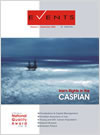
resource: Magazine events (www.events.ir); No 2 September 2003
http://www.events.ir/no002/002n.htm
В
It is not clear when the first horses were tamed and domesticated in Iran but there are many archeological findings in evidence of there being horses in Iran from the very early days when Aryan tribes began to migrate to this land. Aryans seem to have had both horses and cattle even in the very early times.
Cattle played an especially vital role in the life of the Aryans and were a symbol of power and physical strength, and horses were considered to be a manвҖҷs best friend, inseparable from him, and indispensable to him. It was with the help of the horse that a man could travel and hunt to feed his family. It was the horse that made it possible for the king to have news of all parts of his vast country and thus be able to control and rule it. The present term for horse in the Persian language is asb which comes from Avestan and Achaemenid Persian meaning a male horse, a colt or stallion. The word madyan in Modern Persian stands for mare. In Avestan Persian the word is aspa or aspi.
The horse appears to have been so dear to the Aryan and such an important part of his life that often the menвҖҷs names included the word horse, eg Lohrasb (the owner of a fast horse), Goshtasb (the owner of a war horse)вҖҰ On the metal and pottery utensils such as cups and vases that remain from historic times, the horse is often depicted. It is often said that it was the Aryans who first tamed the horse. This cannot be sustained through any definite evidence but it is beyond doubt that Aryans living in the present day Iran invented the game polo.
The native species in Iran is a small horse that seems to have grazed in the north of Iran for the past 2,500 years, known as the Khazar or Turkoman. Despite the technological advances made in the agricultural sector, with the four-wheel drives and combines taking over the fields, horses are still sought after but now purely for the pleasure of riding and the fine spectacle of races.
The horse breeding industry is now stronger than ever. In Saudi Arabia, for example, horses and riding are the second largest business next to the oil industry. In one Canadian city only, Ontario, revenues from horse feed and riding equipment amounted to a 350m-dollar business in 1980, with 100,000 people working in the industry.
Naturally, the climatic and natural conditions of each region determine its wildlife, flora and fauna. In parts of Europe a breed of horses is found each of which weighs almost one ton. In Iran the native horse is small but
beautiful, often said to be the worldвҖҷs most attractive species. The center for horses and horse breeding in Iran is the northern province of Golestan.
The Turkoman horse has slanting eyes, relatively long ears, a deep chest, a long and slender body, thin-haired tail and mane, a shining skin, and hooves that are suitable for soft clay grounds. It is sensitive, intelligent, and enduring over long distances.
Initially the Turkoman horse was the takkeh which ultimately branched into aakhaltakkeh, yamoot, chenaran, gooklan, and habib-ishan. The genetic reservoir available in Iran offers a great potential for horse breeding and exports. The industry would also be a great source of attraction for tourists. With proper planning this unique genetic reservoir, or to put it more simply God-given wealth, can be effectively used to meet the demands both of the domestic and the export markets across the world.
There are many amateurs and connoisseurs who would gladly spend a few days in Iran to see this horse and to buy one. The horse breeding industry provides jobs for many people:
В Expert horse breeders
В Nutrition specialists
В Veterinary doctors
В Coaches and trainers
В Jumping and dressage riders
В Smiths
В Riding attire producers
В Makers of leather objects such as saddles
В Carriage makers.
Turkoman horses are quite valuable, and there is much profit to be made in this industry in Iran, a country that is fairly rich in the necessary resources.
DonвҖҷt forget the old saying in Iran, which goes something like this: вҖңThere is no horse in the world that does not have some Iranian blood in its veins!вҖқ


